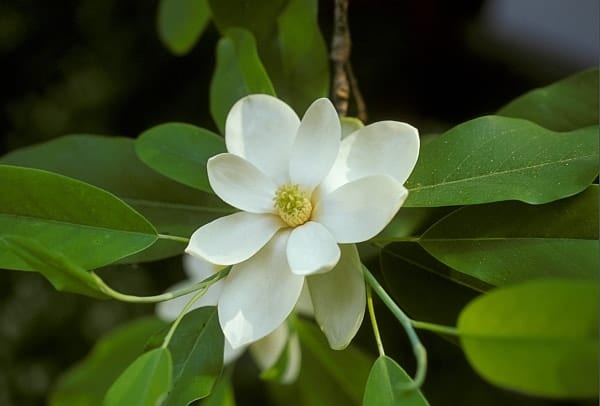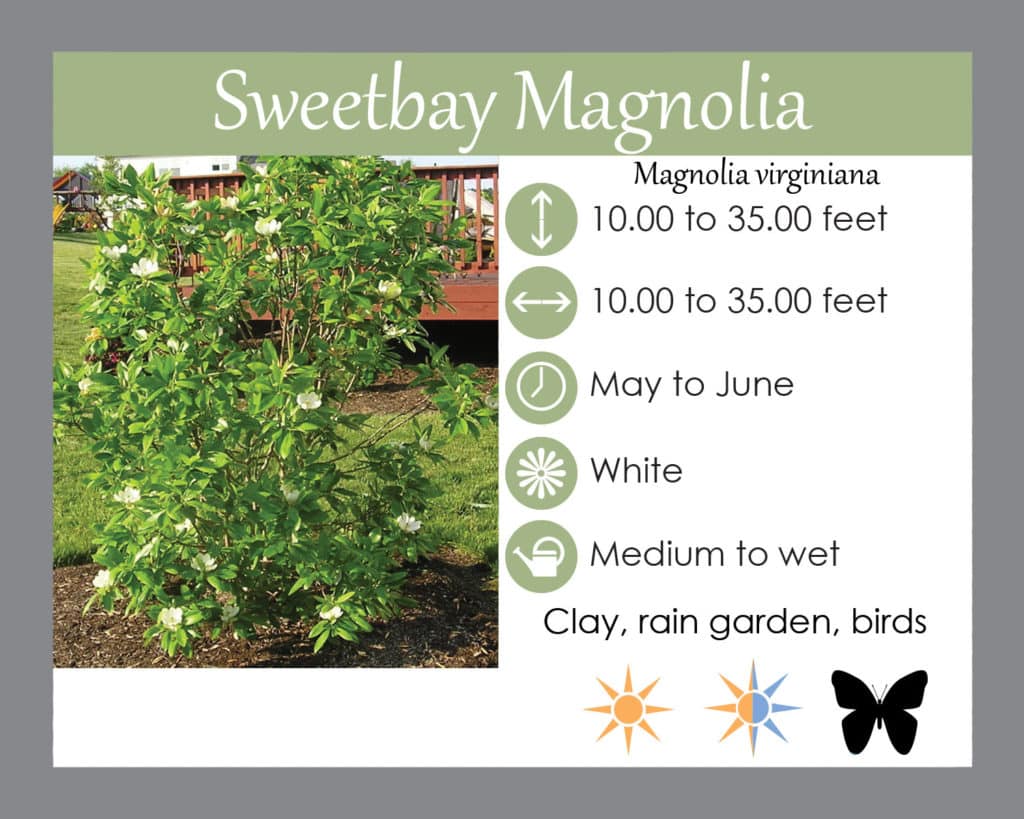LGS Notes: Sweetbay magnolia is a medium size tree with showy white summer flowers.
Some info from the USDA website on the interest to wildlife Sweetbay Magnolia provides:
Magnolia seed ripens in mid-Autumn and is eaten and spread by songbirds, wild turkey, quail, and mammals such as gray squirrels and white-footed mice. Seeds are high in fat and are a good energy source for migratory birds (USNA, 2006). They are eaten by eastern kingbirds, towhees, mockingbirds, northern flickers, robins, wood thrushes, blue-jays, and red-eyed vireos (Arnold Arboretum, 2011; Feather, 2013). Sweetbay is also an important plant for attracting hummingbirds (KCPD, 2007). Pollinators, especially beetles, are attracted to the pollen that is high in protein. It is a host plant for tiger swallowtail butterfly, palamedes swallowtail, spicebush swallowtail, and sweetbay silkmoth (Nitao et al., 1992; Gilman, 2015; NPIN, 2014). Deer and cattle often browse the leaves. The leaves can contain up to 10% crude protein content and can account for 25% of a cattle’s browse in winter (Hodges et al., 2010; Priester, 2004).
Click Here to Get a Quote for Sweetbay Magnolia from Our Nursery
Latin Name: Magnolia virginiana
Common Name: Sweetbay magnolia
Type: Tree


